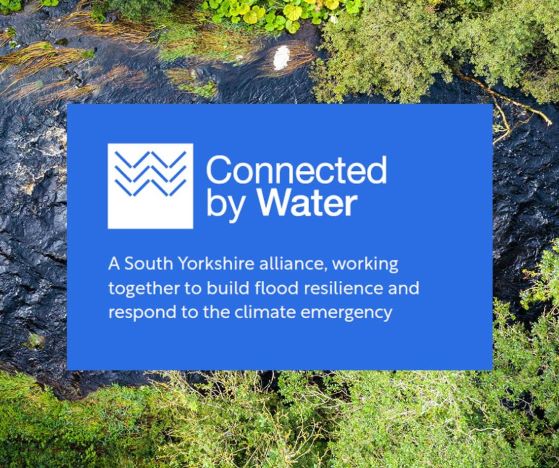Help to prevent flooding
We're working to prevent flooding across the borough. We do this using flood alleviation schemes.
Our partnership
We've created the South Yorkshire Alliance. This includes partners from Doncaster, Rotherham and Sheffield Councils. They also work with the Environment Agency, Yorkshire Water and the South Yorkshire Mayoral Combined Authority. This group is working to reduce flooding across South Yorkshire.
Through Connected by Water, we'll build flood resilience. This will help us deal with climate emergencies. You can read the Connected by Water Action Plan. For more details please email connectedbywater@environment-agency.gov.uk.
We're hoping to do this by building traditional engineered defences. We're storing floodwater in upland areas. This is done by using natural flood management measures. You can watch the video to see how we'll do this.
Flood alleviation schemes
Current schemes
Future schemes
- Church Street, Darton resilience scheme
- Barnsley resilience scheme
- Darton, A637 resilience scheme
- Netherwood Road resilience scheme
How we're reducing the risk of flooding
Our strategy has two main approaches.
Traditional engineering
This method includes building flood defence walls. It also includes improving existing structures. It includes creating new flood storage areas.
Nature-based solutions
The landscapes and rivers which make South Yorkshire at risk to flooding. They're also some of it's most best assets.
The uplands in the River Dearne in Barnsley, give us beautiful moorland landscapes. These uplands lead into wetland nature reserves along the Dearne in Barnsley. Bringing back these natural landscapes and advancing them will help to slow and store water. They'll help nature recover, and provide environments for people and wildlife to thrive in.
Nature-based solutions like the one above form a key part of our plan. This plan will not only reduce flood risk but will ease climate change and restore nature. This is done by storing carbon and protecting our environment that we all love and depend on.
Making these changes can also unlock more benefits like reducing carbon. This will make our environment better. It also helps us to re-connect with nature.
Why is helping to prevent flooding important to us
The impact of flooding can have a far reaching effect on our borough. It’s vital for us to protect our residents, properties and communities.
Who's responsible for flooding?
We're in charge of managing flood risk in Barnsley. This includes surface water, groundwater and other channels that have water. This can be below or above ground. We work with the emergency services, environment agency, Met Office, and utility companies.
Flooding can be caused by:
- run-off water from fields and over-full rivers. This is usually after heavy rainfall
- blocked drains
- cracked or burst water pipes owned by Yorkshire Water
Depending on the assets that are flooding, will affect whose duty it is for fixing the problem.
The land drainage system deals with a large portion of water arising inland from rainfall and surface water run-off. It also deals with groundwater. The land drainage system includes rivers, watercourse, ditches, culvert, pipes, lakes and ponds.
We don't own any land drainage ditches, unless they are next to or on council land.
If you own land located next to or near a drainage ditch, river or any other inland body of water then you're legally responsible for this. You have certain rights and duties.
If the title deeds for your property show the boundary to stop at your fence, you have riparian rights and duties to the centre of the watercourse. This applies is if the ditch is located between two properties. If the ditch joins a highway then you are in charge of maintaining the whole ditch.
Find out more about who’s managing flood risk.
Flooding terms
- A culvert is a drainage structure, such as a pipe, that allows water to freely flow under various obstructions. These pipes provide effective storm water management. This allows the free flow of water under roads, trails, and railways.
- Ponding is the (typically) unwanted pooling of water on a flat surface such as a road.
- The water table is an underground boundary between the soil surface and the area where groundwater fills spaces between cracks in rock.
Contact us about flooding
For more details, visit our flooding advice and prevention page. You can find out how to report flooding.
You can also visit the GOV.UK website for general advice about flooding. You can call the Environment Agency on 0345 988188.

